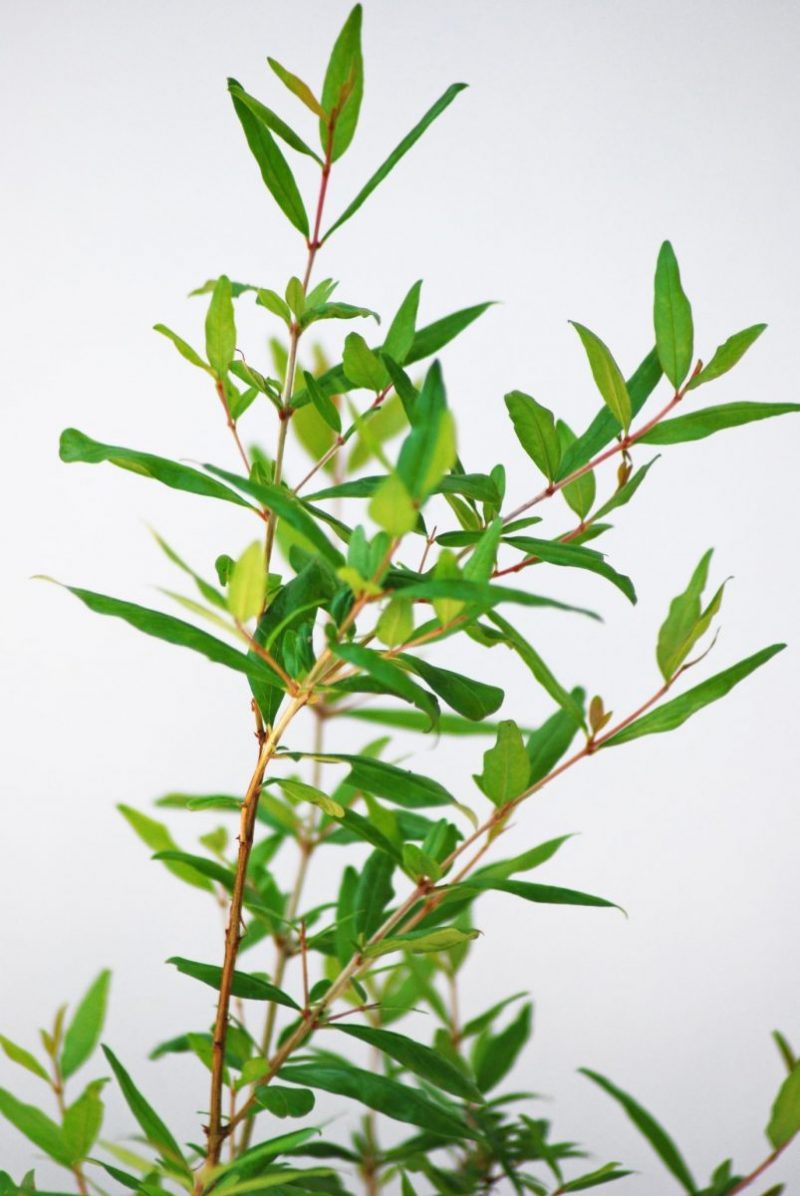Pomegranate, planting guide and care work
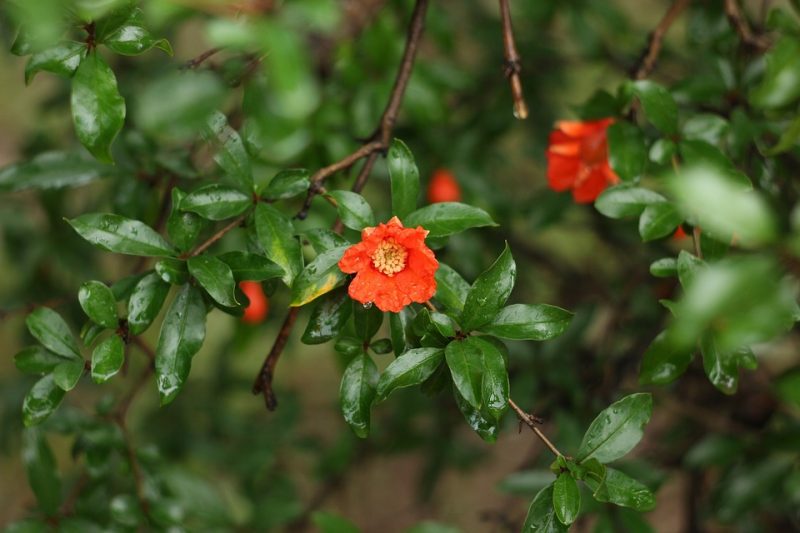
The pomegranate (Punica granatum) is a small shrub or tree (max. 10 m tall), belonging to the Lythraceae botanical family, genus Punica, order Myrtales. In its natural environment it is cultivated primarily for its edible fruits, but in other countries it is cultivated only for ornamental purposes. It is loved for its bushy appearance, for its bright flowers, as well as for its shiny, thick, elongated leaves. The branches often end in thorns.
Species, varieties and cultivars
Punica granatum (pomegranate)
It is a species native to Southeast Europe and Asia, currently cultivated for its fruits in most regions with mild climates. It has simple, deciduous leaves (in some regions the leaves are partially persistent), shiny, thick, with elongated, lanceolate shapes. The flowers are terminal, solitary or clustered in groups of two or three, red. The fruit (pomegranate) is similar to the apple in terms of shape and appearance, with a diameter of up to 12-13 cm. The skin is hard, first green, then red, and inside there are many small false fruits, with red, pink or partially transparent pulp. Each false fruit has only one kern. In the conditions of some temperate countries, the pomegranate does not produce fruit, it is cultivated only for ornamental purposes, in flower pots or in gardens.
Varieties:
- Punica granatum var. nana – small in size, with compact appearance, suitable for indoor spaces, with inedible fruits;
- Punica granatum var. Pleniflora;
- Punica granatum var. Sweet Alak;
- Punica granatum var. Saveh Black etc.
Cultivars:
- Punica granatum ‘Wonderful’;
- Punica granatum ‘Akko’;
- Punica granatum ‘Herskovitz’ etc.
Punica protopunica (Socotran pomegranate)
Originally from Socotra, Yemen, it is a species similar to the common pomegranate, with smaller fruits and more sour false fruits. Due to the inferior qualities of the fruits, this species has not been cultivated on a large scale outside its natural environment.
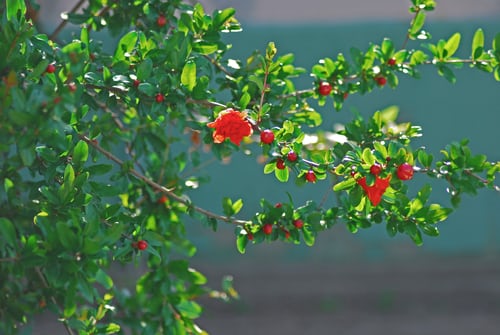
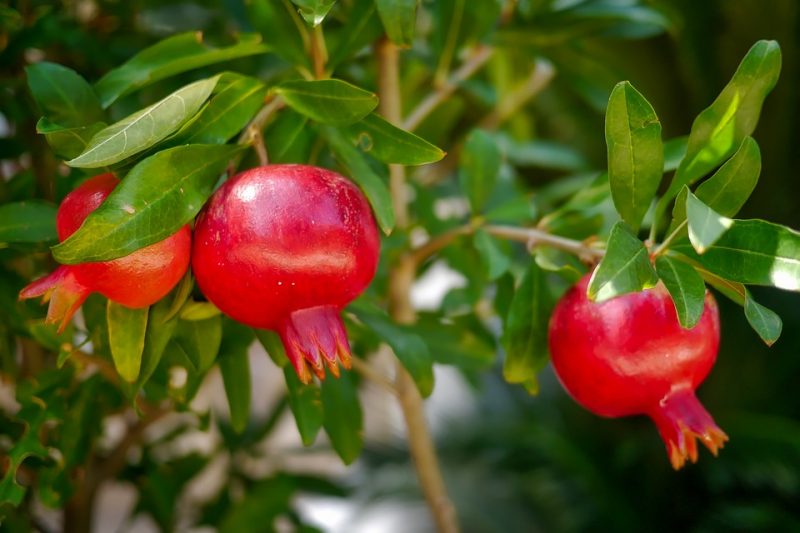
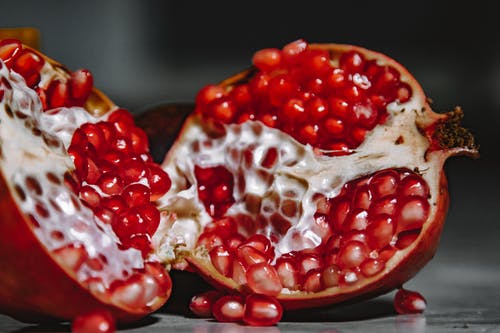
Environmental conditions
Light. It grows well in full sunlight.
Temperature. The pomegranate is adapted to the warm climate, and it does not tolerate well low temperatures. Negative temperatures severely affect pomegranate shrubs, if exposed to approx. -10 ℃, they dry irreversibly. In such conditions, it is recommended to bring the plant indoors for the winter, in a room with min. 10 ℃ and enough light.
Soil. It grows best on well-drained, light-medium soils. For ornamental cultivation, it is recommended to use flower soil or garden soil, mixed with sand and garden mould. It also grows on loamy, acidic, calcareous soils, and even on rocks.
Care
Watering. The pomegranate is resistant to the lack of water in the soil. However, in the case of cultivation for ornamental purposes, it is recommended to water the plants twice a week during the vegetative growth period, respectively once every 1-2 weeks during the winter. In the case of crops for fruit production, irrigation needs to be done regularly.
Fertilization. For vigorous growth, the occasional application of compost and specific fertilizers is recommended.
Recommended products
-
You can find products on a different store
Change Store -
You can find products on a different store
Change Store -
You can find products on a different store
Change Store -
You can find products on a different store
Change Store -
You can find products on a different store
Change Store -
You can find products on a different store
Change Store -
You can find products on a different store
Change Store -
You can find products on a different store
Change Store -
You can find products on a different store
Change Store -
You can find products on a different store
Change Store -
You can find products on a different store
Change Store -
You can find products on a different store
Change Store -
You can find products on a different store
Change Store -
You can find products on a different store
Change Store -
You can find products on a different store
Change Store -
You can find products on a different store
Change Store -
You can find products on a different store
Change Store -
You can find products on a different store
Change Store -
You can find products on a different store
Change Store -
You can find products on a different store
Change Store -
You can find products on a different store
Change Store -
You can find products on a different store
Change Store -
You can find products on a different store
Change Store -
You can find products on a different store
Change Store
Pruning. Shape correction cuttings can be done during the winter.
Recommended products
-
You can find products on a different store
Change Store -
You can find products on a different store
Change Store -
You can find products on a different store
Change Store -
You can find products on a different store
Change Store -
You can find products on a different store
Change Store -
You can find products on a different store
Change Store -
You can find products on a different store
Change Store -
You can find products on a different store
Change Store -
You can find products on a different store
Change Store -
You can find products on a different store
Change Store -
You can find products on a different store
Change Store -
You can find products on a different store
Change Store -
You can find products on a different store
Change Store -
You can find products on a different store
Change Store -
You can find products on a different store
Change Store -
You can find products on a different store
Change Store -
You can find products on a different store
Change Store -
You can find products on a different store
Change Store -
You can find products on a different store
Change Store -
You can find products on a different store
Change Store -
You can find products on a different store
Change Store -
You can find products on a different store
Change Store -
You can find products on a different store
Change Store -
You can find products on a different store
Change Store
Planting. It is recommended to carry out planting and transplanting operations in April.
Recommended products
-
You can find products on a different store
Change Store -
You can find products on a different store
Change Store -
You can find products on a different store
Change Store -
You can find products on a different store
Change Store -
You can find products on a different store
Change Store -
You can find products on a different store
Change Store -
You can find products on a different store
Change Store -
You can find products on a different store
Change Store -
You can find products on a different store
Change Store -
You can find products on a different store
Change Store -
You can find products on a different store
Change Store -
You can find products on a different store
Change Store -
You can find products on a different store
Change Store -
You can find products on a different store
Change Store -
You can find products on a different store
Change Store -
You can find products on a different store
Change Store -
You can find products on a different store
Change Store -
You can find products on a different store
Change Store -
You can find products on a different store
Change Store -
You can find products on a different store
Change Store -
You can find products on a different store
Change Store -
You can find products on a different store
Change Store -
You can find products on a different store
Change Store -
You can find products on a different store
Change Store
Propagation. It can be done by germination (from seeds) or vegetatively (by cuttings or grafting). Seed germination is difficult, seed propagation being recommended to be carried out by specialists in the field. In most cases, propagation is done by cuttings, because the pomegranate stems have a good rooting capacity. For summer cuttings, use stems that do not have inflorescences. They are cut and partially inserted into the ground after the application of rooting hormones, after which they have to be kept in unventilated spaces. For winter cuttings, cut the mature stem, 30-50 cm long, apply the rooting hormones, then ⅔ from the cutting is inserted into the prepared substrate.
Recommended products
-
You can find products on a different store
Change Store -
You can find products on a different store
Change Store -
You can find products on a different store
Change Store -
You can find products on a different store
Change Store -
You can find products on a different store
Change Store -
You can find products on a different store
Change Store -
You can find products on a different store
Change Store -
You can find products on a different store
Change Store -
You can find products on a different store
Change Store -
You can find products on a different store
Change Store -
You can find products on a different store
Change Store -
You can find products on a different store
Change Store -
You can find products on a different store
Change Store -
You can find products on a different store
Change Store -
You can find products on a different store
Change Store -
You can find products on a different store
Change Store -
You can find products on a different store
Change Store -
You can find products on a different store
Change Store -
You can find products on a different store
Change Store -
You can find products on a different store
Change Store -
You can find products on a different store
Change Store -
You can find products on a different store
Change Store -
You can find products on a different store
Change Store -
You can find products on a different store
Change Store
Diseases and pests. The pomegranate is relatively resistant to diseases and pests. Leaf spots might be found, respectively the presence of thrips, aphids or red spider mites. To control them, specific fungicides and insecticides are applied.
Additionally:
- The longevity of the pomegranate is 15-20 years in its natural environment, of approx. 5 years in the conditions of some temperate countries (in flower pots, during the summer outdoors, in winter indoors), respectively 1-2 years indoors, in flower pots.
- the fruits, false fruits and pomegranate seeds, as well as the leaves, buds and pomegranate bark are used in the pharmaceutical industry and for therapeutic purposes.














































































































































































































































































































































































































































